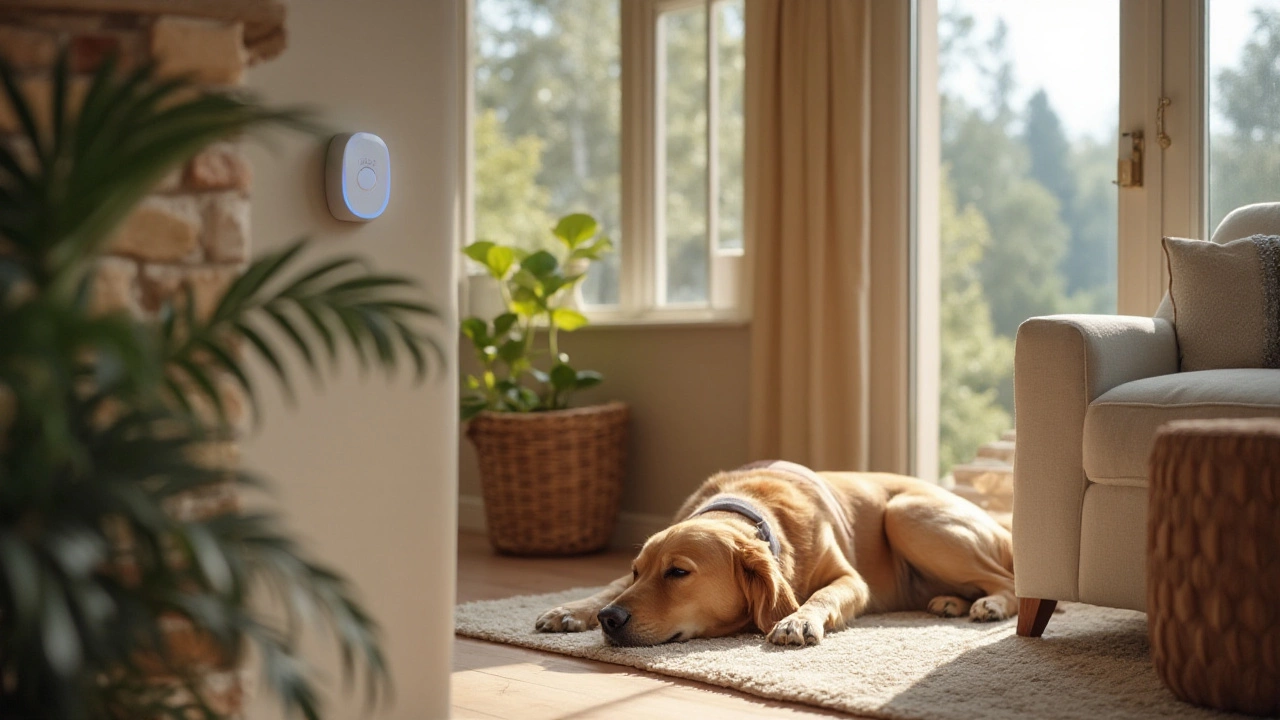If you love your pets but also want a solid home alarm, you’re not alone. Many owners worry that a motion sensor will go off every time the cat darts across the living room. The good news? Modern pet safety alarms let you protect your house and keep your whiskered companions safe at the same time.
The first step is picking a sensor that can tell the difference between a prowling intruder and a playful pet. Look for devices that list a "pet‑immune" or "pet‑friendly" rating. These units usually have a higher sensitivity threshold (often around 12‑18 inches) so a small animal won’t trigger an alarm, but a human will.
Brands like SimpliSafe even publish a guide titled Will SimpliSafe Sensors Detect My Cat? that walks you through adjustment settings. Most systems let you fine‑tune the range right from the app – just pull the slider a notch lower and you’ll stop getting alerts when Fluffy hops onto the couch.
If you have a larger dog, consider a dual‑technology sensor that combines infrared (IR) with microwave detection. The IR spot detects heat signatures, while the microwave adds motion detection. Together they’re less likely to mistake a dog’s wagging tail for a burglar.
Placement matters more than the tech itself. Avoid pointing motion sensors straight at windows, doors, or busy streets where passing shadows can cause nuisance alerts. Instead, aim them at entry points where a human would have to walk past.
Use pet‑specific zones if your system supports them. For example, you can create a "pet‑free" area around the kitchen and a "pet‑allowed" zone in the backyard. The system will ignore motion in the pet‑allowed space while staying vigilant elsewhere.
Don’t forget about cameras. A night‑vision camera can give you a visual check before you decide to call the police. The post "Best Night Vision Devices for Security and Surveillance in 2025" explains how IR illuminators work without bothering pets – they’re invisible to humans but still light up the scene for the camera.
Finally, test everything. Walk through each sensor’s range with a pet toy or a stuffed animal before you arm the system. If the alarm sounds, tweak the sensitivity or move the sensor a few inches. A quick test now saves a lot of hassle later.
With the right sensor, smart placement, and a few tweaks in the app, you can enjoy peace of mind knowing your home is protected and your pets aren’t constantly setting off alarms. Keep your furry friends safe, your alarm reliable, and you’ll never have to wonder whether the next beep is a cat or a criminal.

As modern technology becomes an integral part of home security, pet owners often wonder about the impact of these systems on their animals. This article examines the suitability of Ring alarms for households with pets. How do they work around active pets, and are there specific features to look for? We also discuss some tips to ensure your pets stay comfortable and safe while your home remains secure.